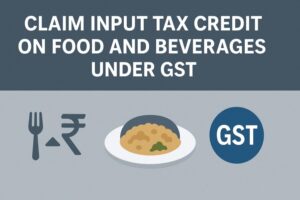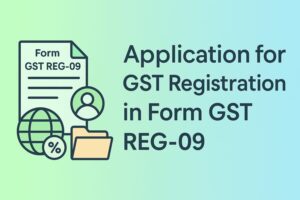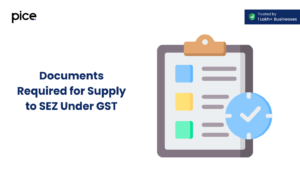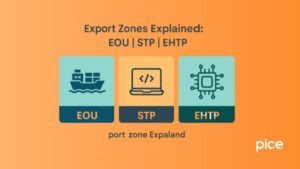How to Register as a GST Practitioner: A Guide
- 23 May 25
- 10 mins

How to Register as a GST Practitioner: A Guide
- What are the Requirements to Become a GST Practitioner?
- Roles and Responsibilities of a GST practitioner
- Step-by-Step Registration Process of a GST Practitioner
- Step-by-Step Guide for Accepting or Rejecting to Serve as a GST Practitioner
- Key Differences Between a Taxpayer and a GST Practitioner
- Benefits of Becoming a GST Practitioner
- Conclusion
Key Takeaways
- GST practitioners help taxpayers with return filing, refunds, and compliance.
- Eligibility requires Indian citizenship, relevant degree or experience, and clean tax record.
- Registration is done online through the GST portal with document and Aadhaar verification.
- Practitioners can accept or reject taxpayer requests via the GST dashboard.
- The license is lifelong unless revoked, offering income and professional growth.
The Goods and Services Tax (GST) law impacts every stage of sale in the Indian finance ecosystem. Yet, many taxpayers continue to face confusion around crucial areas such as registration, return filing, refund claims and overall compliance under GST.
To help address these challenges, the Indian government introduced the concept of certified GST practitioners.
According to Section 2(55) of the CGST Act of 2017, a GST practitioner is anyone who has been authorised to assist taxpayers and simplify their GST obligations.
Let’s explore what it takes and how to register as a GST practitioner in this blog.
What are the Requirements to Become a GST Practitioner?
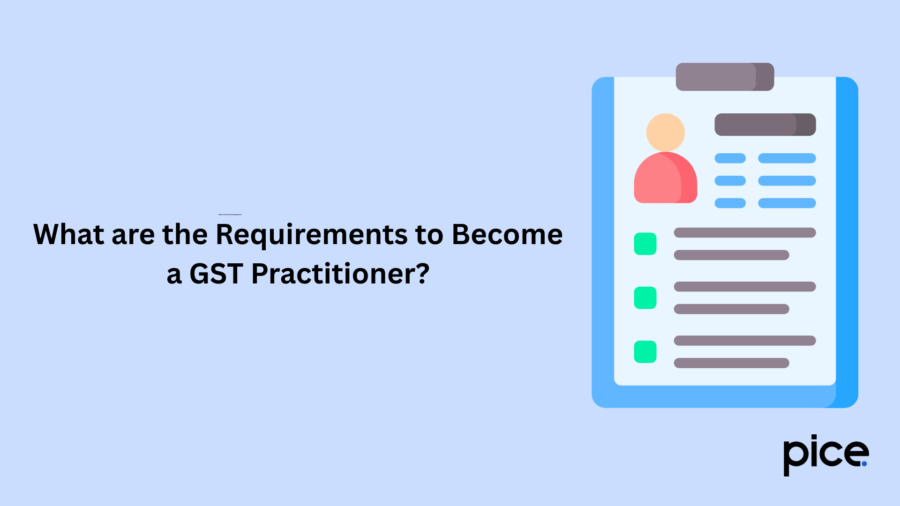
Before understanding the duties and qualifications of GST practitioners, it is essential to know about the eligibility criteria to become a GST practitioner:
- You must be an Indian citizen.
- You should not have any criminal record that can impact your role as a GST practitioner.
- Your age should be a minimum of 18 years.
- You should not be bankrupt.
- A degree of graduation or post-graduation in a relevant discipline is essential to become eligible for this role.
- You must comply with the tax regulations and should not be penalised for any tax evasion.
Here are the additional conditions for registration as a GST practitioner that you might fulfil:
- You are a retired officer who served in the Commercial Tax Department of any State Government.
- You had a minimum of two years of experience in a position above the Group-B gazetted officer rank.
- At least five years of experience as a sales tax practitioner or tax return preparation under the current legislation can also make you eligible for this role.
Qualifications to Become GST Practitioners
Qualifications are necessary to describe your skills or expertise in any role. These are the qualifications you must have to become a GST practitioner:
- Graduation: You must be a graduate in any one of Commerce, Banking, Law or Business Administration or Business Management from a reputable university.
- Post-Graduation: You may have a postgraduate degree in a relevant field.
- Tax Professionals: You must have worked as a chartered accountant, cost accountant or company secretary.
- Tax Practitioners for Sales: Practice of sales tax law for at least five years can allow you to become a GST practitioner.
- Training: You should be trained under the GST council.
- Professional Courses: Your resume must include a government-certified course on finance or taxation.
- Retired Government Employees: You must have hands-on experience in the Department of Revenue or State Tax Department. You should be retired not below Group B.
Roles and Responsibilities of a GST practitioner
As you have understood the qualifications of a GST practitioner, now you must become aware of the duties for this role:
- Consultation: GST professionals have to provide knowledge about tax rules and procedures. They must also provide valuable assistance to navigate tax systems that can reduce taxpayers’ mistakes.
- Monthly Statements: Practitioners need to file monthly, quarterly and annually annual statements.
- Claim Refunds: You must also help in filing refund claims as a GST practitioner.
- Maintain Record: Maintenance of records for clients is one of the primary responsibilities of a GST practitioner.
- Filing of Returns: GST practitioners must file returns on behalf of registered businesses.
- Consultancy: These practitioners should provide advice regarding GST-related matters to the clients.
Step-by-Step Registration Process of a GST Practitioner
GST professionals must have to take on a lot of roles and responsibilities. You can also serve the role of a GST practitioner by following the below steps:
- Step 1: Go to the GST common portal.
- Step 2: Navigate to the ‘Registration’ tab from ‘Services’. Once you click on ‘New Registration’, a new page for registration will be displayed.
- Step 3: Now select ‘New Registration’ and select ‘GST Practitioner’ from the ‘I am a’ dropdown menu. Similarly, you have to select the State and District. Now enter your name, PAN details, email address and mobile number in the required field. Thereafter, enter the captcha code and select ‘Proceed’.
- Step 4: You will see an OTP verification page is opened. Now put the two different OTPs that you have received on your mobile number and email. Select the ‘Proceed’ option.
- Step 5: After receiving a TRN, again select the ‘Proceed’ button.
- Step 6: Enter your TRN, verify the captcha and click on the ‘Proceed’ option.
- Step 7: Enter the OTP you have received on your registered mobile number and click on ‘Proceed’.
- Step 8: Enter all the necessary details for registration and upload the documents in .jpeg and .pdf format. Then click on the ‘Submit’ option on the verification page.
- Step 9: Enter your first, middle and last name and choose your birthdate in the ‘Applicant Details’. Be mindful that the first name is mandatory. Then choose gender and upload the photograph in JPEG format with the file size of 100 KB. Select the ‘Save and Continue’ button to proceed to the next section.
- Step 10: In the ‘Professional Address’ page, enter your address with the relevant PIN code. You will see that the respective State and District will be automatically filled out from the form’s PART-A. Select your appropriate professional address proof from the drop-down list.
Make sure you upload the chosen professional address proof in PDF or JPEG format with a file size of a maximum of 1 MB. After filling in the details and uploading the document, select the ‘Save and Continue’ option to proceed to the final section.
- Step 11: Heading towards the ‘Verification Page’, click on the checkbox with a verification statement and enter your location. Choose any one option between DSC and EVC or e-signature to apply. It is necessary to update the Aadhaar number in the ‘Applicant Details’ section for the digital signature.
- Step 12: You should ensure that the emSigner is installed on your device and the DSC is registered on the website while submitting through the DSC token.
- Step 13: Two OTPs will be sent to your Aadhaar-linked mobile number and e-mail ID. Put the OTPs in the required fields and apply.
You will see a success message on your screen after your application is submitted. The acknowledgment will be sent to your registered email address and cell phone number within the next 15 minutes. Your mobile phone number and email address will receive a receipt for your Application Reference Number (ARN). Nevertheless, you will be unable to modify your application once it has been submitted.
Step-by-Step Guide for Accepting or Rejecting to Serve as a GST Practitioner
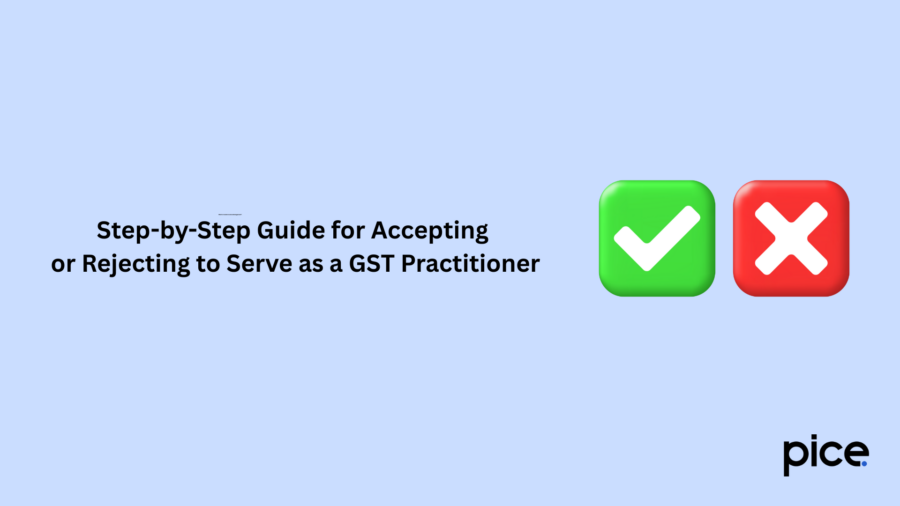
Once you have registered as a GST practitioner, taxpayers will start approaching you. Follow these steps to accept and reject to act as a GST practitioner:
- Step 1: Log on to the GST common portal as a GST practitioner.
- Step 2: Select the ‘Accept/Reject Taxpayer’ button from the dashboard or by going to Services > User Services > Accept / Reject Taxpayer.
- Step 3: Select ‘View’ from the list of interaction requests that need to be accepted or denied.
- Step 4: Use the following criteria to accept or reject the engagement request:
(1) To Accept: Check the consent box and click the ‘Submit with DSC or EVC’ button.
(2) To Reject: Click the ‘Reject’ button to finish the procedure without checking the consent box.
Both the relevant taxpayer and the GST practitioner receive an acknowledgement email.
Key Differences Between a Taxpayer and a GST Practitioner
The below table makes a comparison between a taxpayer and a GST practitioner:
| Feature | Taxpayer | GST Practitioner |
| Meaning | A person who is liable to pay tax | Professional who helps taxpayers with goods and services tax activities |
| Responsibility | Tax payment, compliance with GST regulations and filing GST returns | Assist taxpayers with GST compliance, file returns on their behalf and offer expert guidance |
| Registration | Compulsory if turnover crosses the threshold limit | No compulsory but requires a certification for credibility |
When Will a GST Practitioner License Become Invalid?
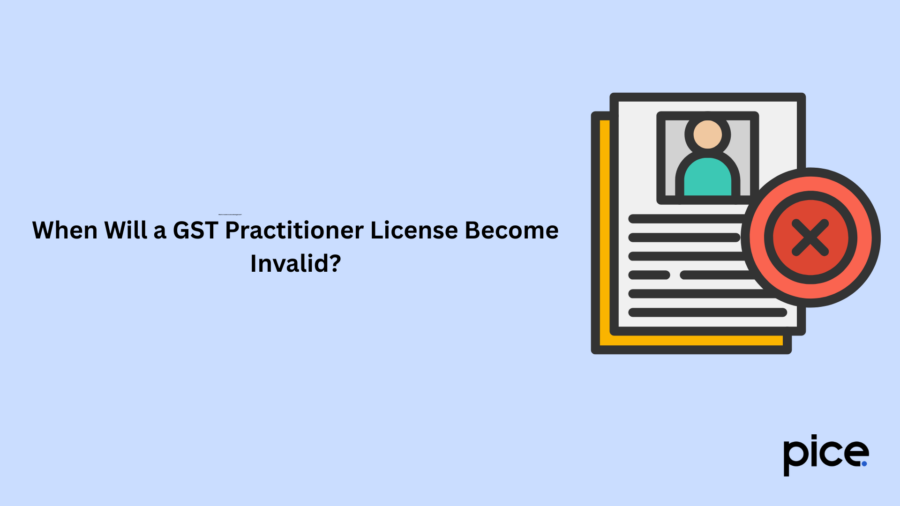
A qualified GST practitioner’s license is valid for a lifetime in the region in which he or she is enrolled. The license will become invalid only if it is revoked by the tax authorities. However, GST practitioners must pass tests that are administered by a relevant authority to maintain their licenses within a year of the GST’s implementation.
If you want to become a GST practitioner through the sales tax practitioner or tax return preparer routes, you must pass the GST authority’s test. Furthermore, for all purposes, a GST practitioner who is registered in any state or Union Territory shall be regarded as registered there.
Benefits of Becoming a GST Practitioner
If you become a GST practitioner, you may get numerous benefits. Below are some of them:
- Rewarding Profession: Being a GST practitioner, you will enjoy professional recognition with enough space for professional growth in the rapidly growing GST industry.
- Potential Revenue: You may earn a good amount of revenue by charging for your services.
- Continuous Learning: A career as a GST practitioner will enhance your ongoing professional development. You will gather a lot of information about the most recent GST legislation and regulations.
Conclusion
Becoming a GST practitioner requires an organised approach that is intrinsic to the complexities of GST. Therefore, understanding the procedure of how to register as a GST practitioner is crucial. Being a practitioner in this field, you can gain higher revenue, prioritise continuous learning and get a rewarding profession. For this, you need to gather knowledge regarding compliance with evolving tax regulations.
💡If you want to streamline your invoices and make payments via credit or debit card or UPI, consider using the PICE App. Explore the PICE App today and take your business to new heights
 By
By 






